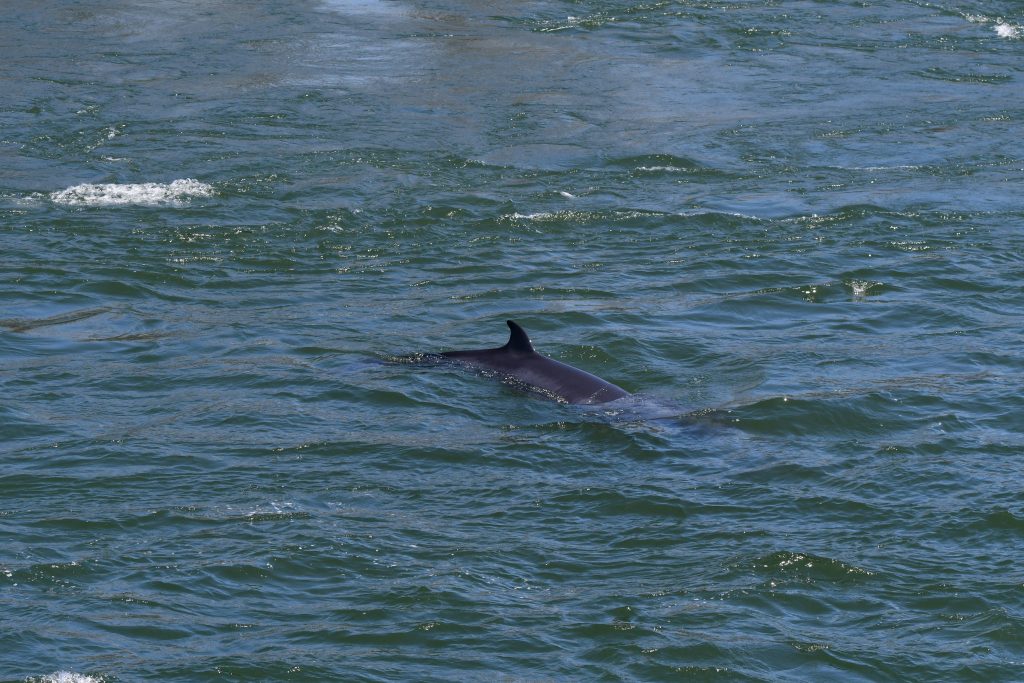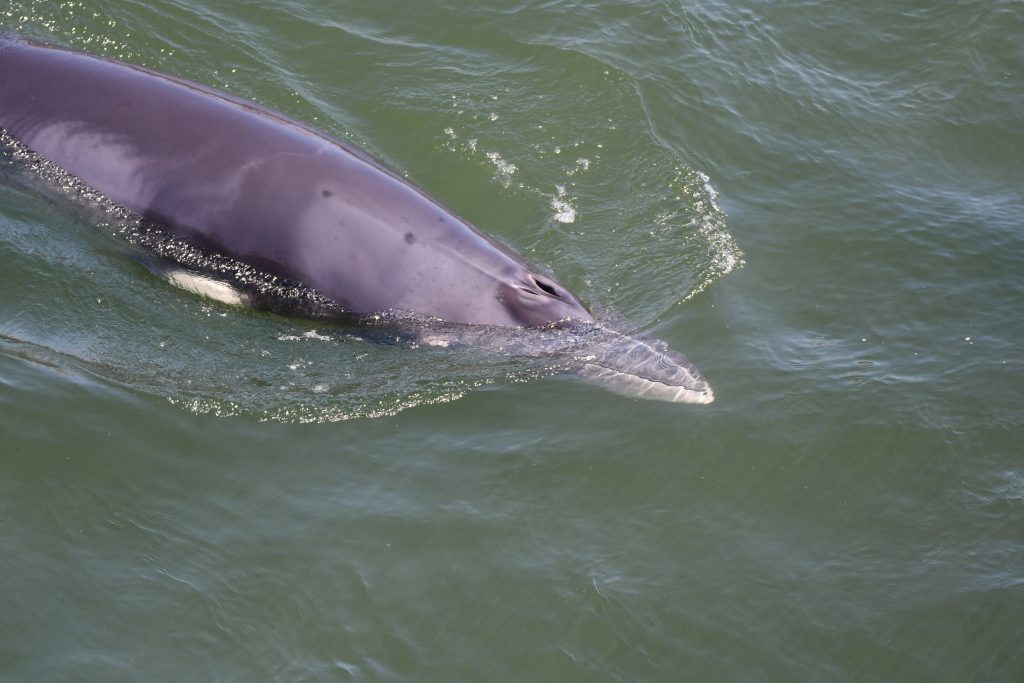Wayward minke whale spotted in Montreal area
Posted May 10, 2022 10:50 am.
Last Updated May 10, 2022 11:45 pm.
For the second time in two years, a whale has been spotted in the Montreal area, hundreds of kilometres away from its usual habitat, the head of a marine mammal research group confirmed Monday.
Robert Michaud of the Réseau québécois d’urgences pour les mammifères marins (RQUMM) said a young minke whale was first spotted Sunday in the St. Lawrence River near the city’s Parc Jean-Drapeau.
Michaud said it’s not clear why the whale would make such a long journey into a freshwater habitat that’s not healthy for it. It’s possible the minke is ill or disoriented, but it’s also possible it’s just curious, he said.
“Maybe it’s just an explorer, a young animal following fish and making one bad decision after another,” he said in a phone interview.
#WATCH: The young minke whale, seen since Sunday in the Montreal-area, was spotted Tuesday off Parc Jean-Drapeau.
READ: https://t.co/SmrtWwAjrt
Video credit: Martin Daigle, CityNews pic.twitter.com/WDn1QZLs5O— CityNews Montreal (@CityNewsMTL) May 10, 2022
Late Monday afternoon, the whale could be seen in a section of the river that flows between two islands, in the shadow of the Montreal Biosphere built for Expo 67.
Crowds lined a bridge that spans the waterway, pointing and gasping as the small grey whale came up periodically for air.
The sighting comes nearly two years after another whale, a humpback, spent several days near Montreal’s Old Port, where it delighted curious onlookers with its acrobatic leaps out of the water. Despite its apparent good health, that whale was found dead in June 2020, and a necropsy suggested the 10-metre-long animal may have been hit by a boat.



Michaud said minke whales are “the smallest of the big whales,” reaching around eight metres in length. While they’re fairly common in Quebec, they don’t generally venture west of the St. Lawrence estuary around Tadoussac, where the water is salty.
While the whale off Montreal appears healthy, its current location is “not a nice place for a whale to be,” he said. “It’s 450 kilometres upstream from where it should be at this time of year.”
A team has been deployed to observe the whale, but Michaud said the group can’t do much to help besides warning boaters to be careful. He said there are no known techniques for transporting or steering an animal of that size back downstream.
He said it’s also unlikely experts will be able to carry out the kind of 24-hour monitoring needed to entirely prevent another boat strike, because doing so would involve piercing the animal’s skin with a GPS tracker when it’s already at higher risk of infection from its freshwater surroundings.
He said the group is crossing its fingers and hoping the whale turns around and heads back downstream on its own _ and that it avoids the fate of its predecessor.
“The best we can do is to wish it good luck,” he said.
This report by The Canadian Press was first published May 9, 2022.








